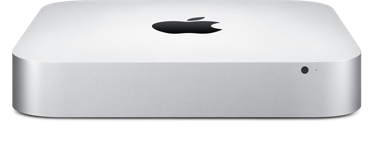February 18, 2015 by Vincent
Switching from Windows 7 to OS X Yosemite; Quirks
Late last year, I replaced my iPhone 5 with a Sony Xperia Z3 Compact, my first Android device, after having used iOS for the past 5 years. The decision was made partly out of my frustration with the iPhone’s lackluster battery life (couldn’t go through a day with a single charge), but mostly out of curiosity and the urge to give Android a chance. I did the same with my computer a week ago, replacing my 5-year-old Windows 7 laptop with a Mac Mini, paired with my existing 23†Dell monitor, a Windows keyboard and mouse. I picked the mid-tier Mac Mini with the 2.6 GHz Intel Core i5, 8GB RAM, and upgraded the storage to a 1TB Fusion Drive.
I suppose it’s not very smart of me to switch the operating systems of my smartphone and computer at the same time, depriving myself of an otherwise harmonious combination of iOS and OS X. But well, curiosity beats logic this time.
The setup of the Mac Mini was relatively simple. The display and other accessories played well with the Mac Mini, with the exception of my Logitech mouse. The mouse itself worked fine, but the scroll wheel behaved erratically. It will scroll at an impossibly slow rate, unless I start spinning the wheel furiously, and then the page will fly through the end way to quickly. Not ideal. It turns out that there are similar complains by other Mac users on Logitech’s forum, and following the heed of one of the affected user, I installed a utility called “USB Overdriveâ€, which solved the issue.
Setting up the software side of thing is pretty straightforward as well. As most of the applications I use are connected to the cloud, such as Chrome, Evernote, Dropbox, and Spotify, I felt right at home after getting them all set up. These third-party software works almost identically with their Windows counterparts.
Quirks
That said, I’m very much less efficient working on the Mac as I uses a lot of keyboard shortcuts to get work done on a Windows machine. Common keyboard shortcuts are all jumbled up in OS X. While most shortcuts have their equivalents, some are more cumbersome on the Mac. Reloading a webpage, for example, can be achieved by simply pressing the “F5†key in Windows, but OS X requires a “Command + R†combination. And it annoys me to no end that pressing the “Enter†key in OS X doesn’t open a file, the key is used instead to rename a file. Perhaps it make sense to long time Mac user, but it makes no sense at all to a Windows user.
The “close†button is another thing that bothers me a lot. Unlike in Windows, the “close†button in OS X doesn’t actually closes a program. Instead, it hides the program in the background, ready to spring right back into action when you start the program again. It’s quite redundant and confusing as the “minimize†button has a very similar function. To properly quit a program, I’ve learned to either use the “Command + Q†keyboard shortcut or right-click on the program’s icon. It could be more intuitive in my opinion.
I’ve also come to miss the taskbar window preview in Windows 7, as well as the controls it comes with in certain programs, like Spotify’s playback control. The dock in OS X, while pretty, isn’t as functional as its Windows counterpart. Switching back and forth between windows of the same program, like Chrome, is slightly more difficult without a thumbnail preview to identify the correct window. That said, I find Mission Control a great tool for multitasking.
I believe these complains are common to most Windows-to-Mac switchers, it takes time to rewire the brain. As I navigate myself through this unfamiliar platform, I’ll come up with a new blog post on things I love better in OS X compared to Windows.


Leave a Reply